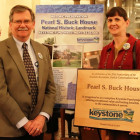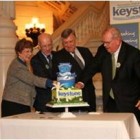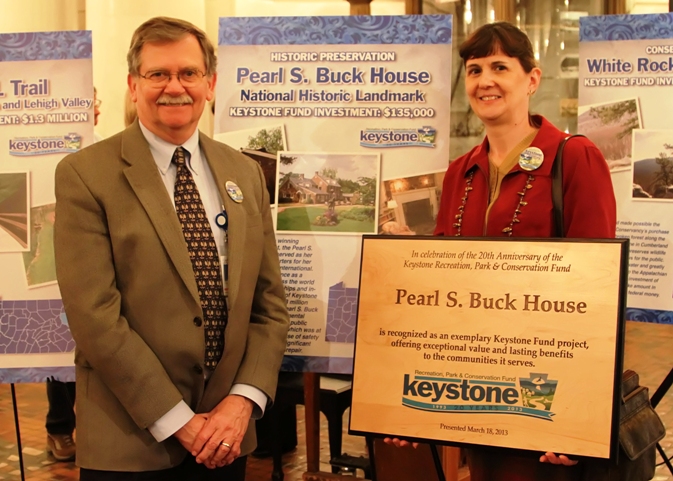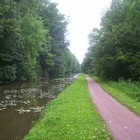 Since its creation in 1993, the Keystone Recreation, Park & Conservation Fund has supported thousands of projects in countless Pennsylvania communities, including more than 500 historic preservation projects. So, on March 18, 2013, on the occasion of the Fund’s 20th Anniversary, the Keystone Partners took a moment to pause and reflect on the Keystone Fund’s impact and honor some of its success stories. Gathered under the dome of the Pennsylvania State Capitol Building representatives from several nonprofit fund partners, current and former state legislators, and agency directors presented awards to projects from across the Commonwealth that exemplify the intent and impact of the Keystone Fund.
Since its creation in 1993, the Keystone Recreation, Park & Conservation Fund has supported thousands of projects in countless Pennsylvania communities, including more than 500 historic preservation projects. So, on March 18, 2013, on the occasion of the Fund’s 20th Anniversary, the Keystone Partners took a moment to pause and reflect on the Keystone Fund’s impact and honor some of its success stories. Gathered under the dome of the Pennsylvania State Capitol Building representatives from several nonprofit fund partners, current and former state legislators, and agency directors presented awards to projects from across the Commonwealth that exemplify the intent and impact of the Keystone Fund.
Proceeds from the Keystone Fund are divided amongst several state agencies, including the Department of Conservation and Natural Resources, Department of Environmental Protection, Department of Education, State System of Higher Education, and Pennsylvania Historical & Museum Commission. The PHMC uses its allocation of Keystone Funds to support state-owned historic sites as well as provide grant funds to non-profit organizations and municipal governments for community-based historic preservation projects.
While it is likely that many of the resources and communities supported by our partner agencies are historic in themselves (think Carnegie libraries, trails along canals, historic farms and rural communities), the Keystone grants offered by PHMC remain the only state-funded assistance specifically for historic preservation projects. This includes both bricks-and-mortar projects as well as non-capital projects like National Register nominations, architectural plans, and reuse studies.

PHMC Executive Director Jim Vaughan and Teresa Mandic, Vice President of Programs, Pearl S. Buck International at the Keystone Awards Ceremony. Photo Courtesy of Mindy Crawford, Preservation Pennsylvania.
The winning project in the historic preservation category was the National Historic Landmark Pearl S. Buck House in Perkasie, Bucks County. Home to the Nobel Prize winning author and philanthropist, the Pearl S. Buck House served as her home and as the headquarters for her foundation Pearl S. Buck International. The author used her influence as a writer to help children across the world through adoption, sponsorships and in-country programs. $135,000 of Keystone funds helped support the $2.8 million preservation of the historic main house. The funds were instrumental in leveraging other private and public funding to restore the house, which was at risk of closing its doors because of safety issues, structural problems, significant water damage and general disrepair. The third and final phase of the restoration of the house is currently underway and a grand reopening is planned for June 26, 2013, also Pearl S. Buck’s 121st birthday.
Eastern State Penitentiary Historic Site in Philadelphia and the Ambler Theater, Montgomery County were also presented with Honorable Mentions for their achievements using Keystone funds.
The awards were presented by a coalition of non-profit partners who work with and on behalf of the entities who most directly benefit from Keystone Funds. The coalition partners include Preservation Pennsylvania, Pennsylvania Growing Greener Coalition, Pennsylvania Land Trust Association, Pennsylvania Library Association, Pennsylvania Parks and Forests Foundation, and Pennsylvania Recreation and Parks Society. Among those present at the ceremony were PHMC Executive Director Jim Vaughan and Bureau for Historic Preservation Director Jean Cutler. Other dignitaries at the ceremony included some of the original legislative champions of the Keystone Fund, including former Lt. Governor Mark Singel, former Sen. F. Joseph Loeper, former Rep. William Lloyd and former Secretary of the Department of Community Affairs Karen Miller.

Former Secretary of Community Affairs Karen Miller, State Rep. William Lloyd, Lt. Governor Mark Singel, and State Senator F. Joseph Loerper cutting the cake at the Keystone Awards Ceremony. Photo courtesy of the Pennsylvania Growing Greener Coalition.
The Coalition also presented the results of a recent economic impact study of the Keystone Fund, which found that projects supported by the Fund help create jobs and generate revenue, increase the value of nearby properties, boost spending at local businesses, make communities more attractive places to live, influence business location and relocation decisions, reduce medical costs by encouraging exercise and other healthy outdoor activities, provide low or no-cost recreation to families, stabilize local taxes in the communities in which they are located and help revitalize depressed areas.


0 Comments
1 Pingback